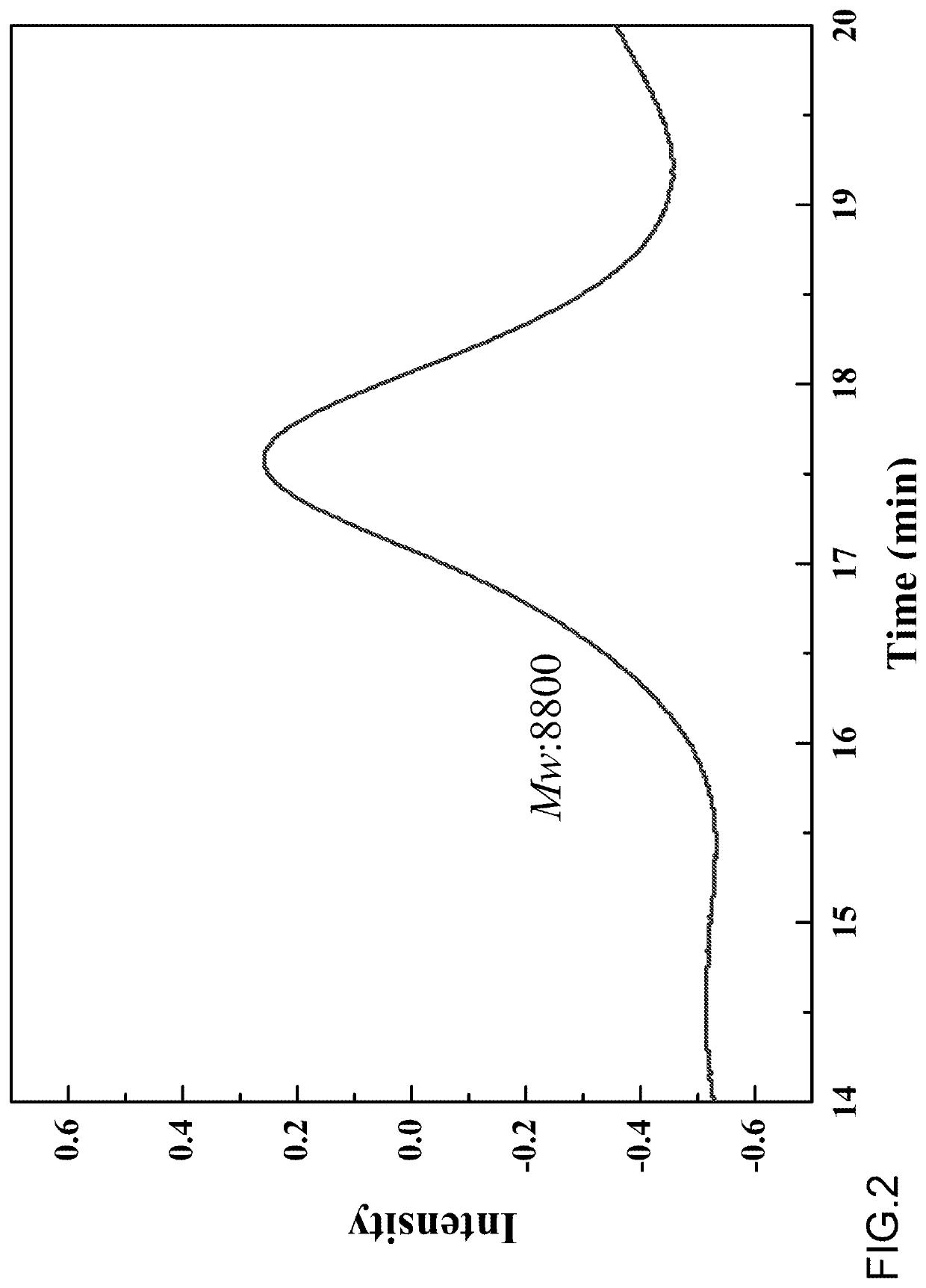Method for Preparing Dispersant using Lignin Degradation Products
a technology of degradation products and dispersants, applied in the field of dispersant, can solve the problems of increasing environmental problems, reducing the reserve of non-renewable energy, and extremely low utilization rate, and achieve the effect of low cost and suitable for industrial production
- Summary
- Abstract
- Description
- Claims
- Application Information
AI Technical Summary
Benefits of technology
Problems solved by technology
Method used
Image
Examples
embodiment 1
[0069]A method for preparing dispersant using lignin degradation products includes the following specific steps:
[0070](1) mixing 40 kg alkaline lignin obtained from bamboo pulp, 30 kg of NaOH and 10 kg of NaAlO2, 1.2 kg of zirconia catalyst and 418.8 kg of water, then blending the mixed solution well;
[0071](2) pouring the mixed solution into a microwave reactor, setting the reaction temperature at 180° C. and the microwave power at 300 W, letting the reaction proceed for 1 h, cooling the reaction products, discharging materials, and filtering the materials to remove solid residues and obtain the lignin degradation products;
[0072](3) adding 40 kg of sodium p-aminobenzenesulfonate into 430 g of lignin degradation product obtained in step (3), and letting the solution react for 40 min at the temperature of 60° C. and the revolving speed of 250 rpm;
[0073](4) adding 20 kg of formaldehyde (effective content) into the solution obtained after the reaction in step (4), stirring for reaction ...
embodiment 2
[0075]A method for preparing dispersant using lignin degradation products includes the following specific steps:
[0076](1) mixing 50 kg of lignin obtained rice hulls using an organic solvent, 15 kg of NaOH and 5 kg of KOH, 2 kg of molybdenum oxide catalyst and 428 kg of water, then blending the mixed solution well;
[0077](2) pouring the mixed solution into a microwave reactor, setting the reaction temperature at 160° C. and the microwave power at 200 W, letting the reaction proceed for 2 h, cooling the reaction products, discharging materials, and filtering the materials to remove solid residues and obtain the lignin degradation products;
[0078](3) adding 62.5 kg of amido-sulfonic acid into 400 g of lignin degradation product obtained in step 3), and letting the solution react for 30 min at the temperature of 50° C. and at the revolving speed of 250 rpm;
[0079](4) adding 27.5 kg of aldehyde (effective content) into the solution obtained after the reaction in step (4), stirring for react...
embodiment 3
[0081]A method for preparing dispersant using lignin degradation products includes the following steps:
[0082](1) mixing 60 kg milled wood lignin of eucalyptuses, 30 kg of NaOH and 10 kg of Na2CO3, 0.5 kg of zinc oxide catalyst and 379.5 kg of water, then blending the mixed solution well;
[0083](2) pouring the mixed solution into a microwave reactor, setting the reaction temperature at 120° C. and the microwave power at 400 W, letting the reaction proceed for 0.5 h, cooling the reaction products, discharging materials, and filtering the materials to remove solid residues and obtain the lignin degradation products;
[0084](3) adding 50 kg of p-aminobenzenesulfonic acid into 410 kg of lignin degradation product obtained in step (3), and letting the solution react for 50 min at the temperature of 70° C. and at the revolving speed of 250 rpm;
[0085](4) adding 25 kg of glutaraldehyde (effective content) into the solution obtained after the reaction in step (4), stirring for reaction for 3 h a...
PUM
| Property | Measurement | Unit |
|---|---|---|
| temperature | aaaaa | aaaaa |
| temperature | aaaaa | aaaaa |
| temperature | aaaaa | aaaaa |
Abstract
Description
Claims
Application Information
 Login to View More
Login to View More - R&D
- Intellectual Property
- Life Sciences
- Materials
- Tech Scout
- Unparalleled Data Quality
- Higher Quality Content
- 60% Fewer Hallucinations
Browse by: Latest US Patents, China's latest patents, Technical Efficacy Thesaurus, Application Domain, Technology Topic, Popular Technical Reports.
© 2025 PatSnap. All rights reserved.Legal|Privacy policy|Modern Slavery Act Transparency Statement|Sitemap|About US| Contact US: help@patsnap.com


